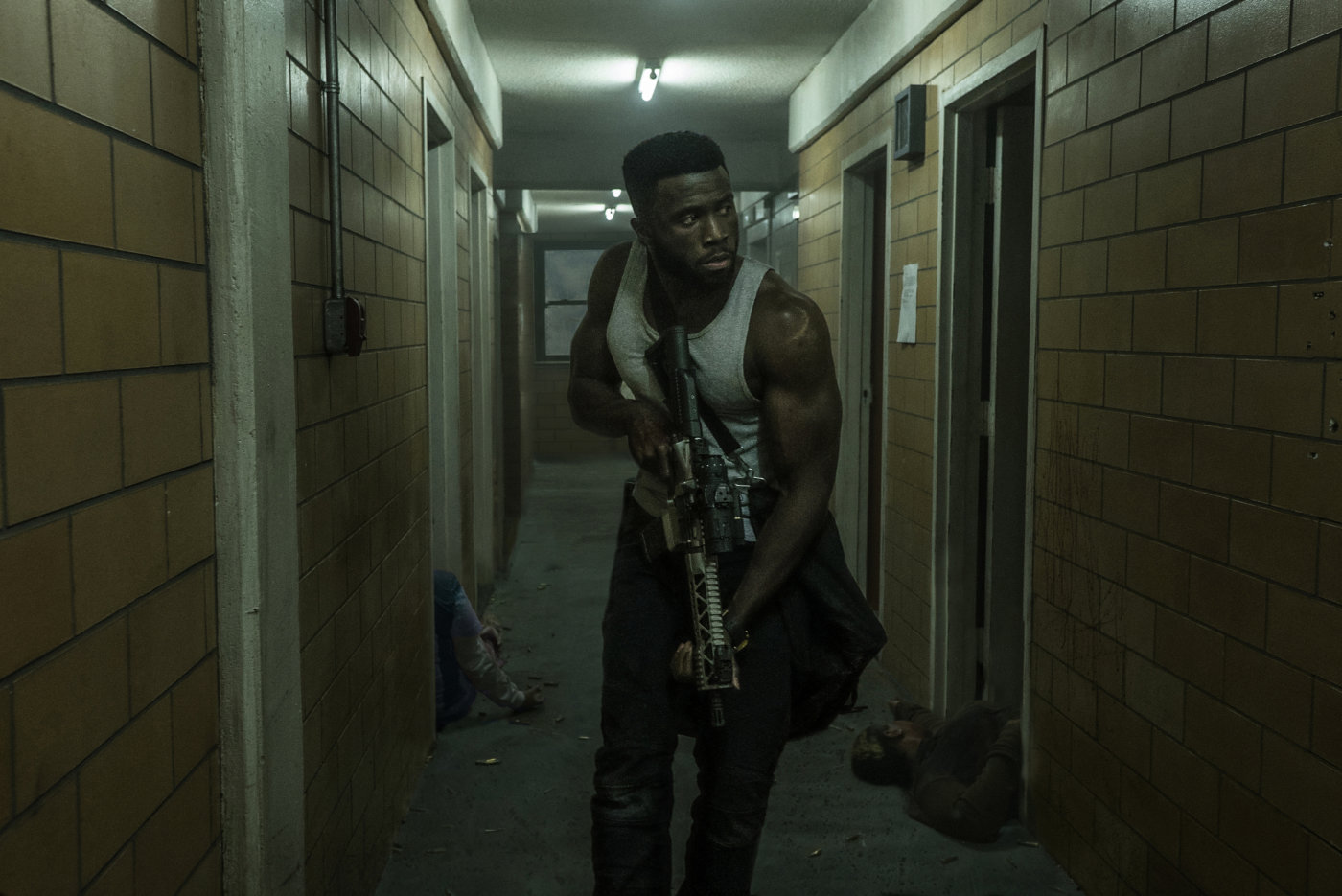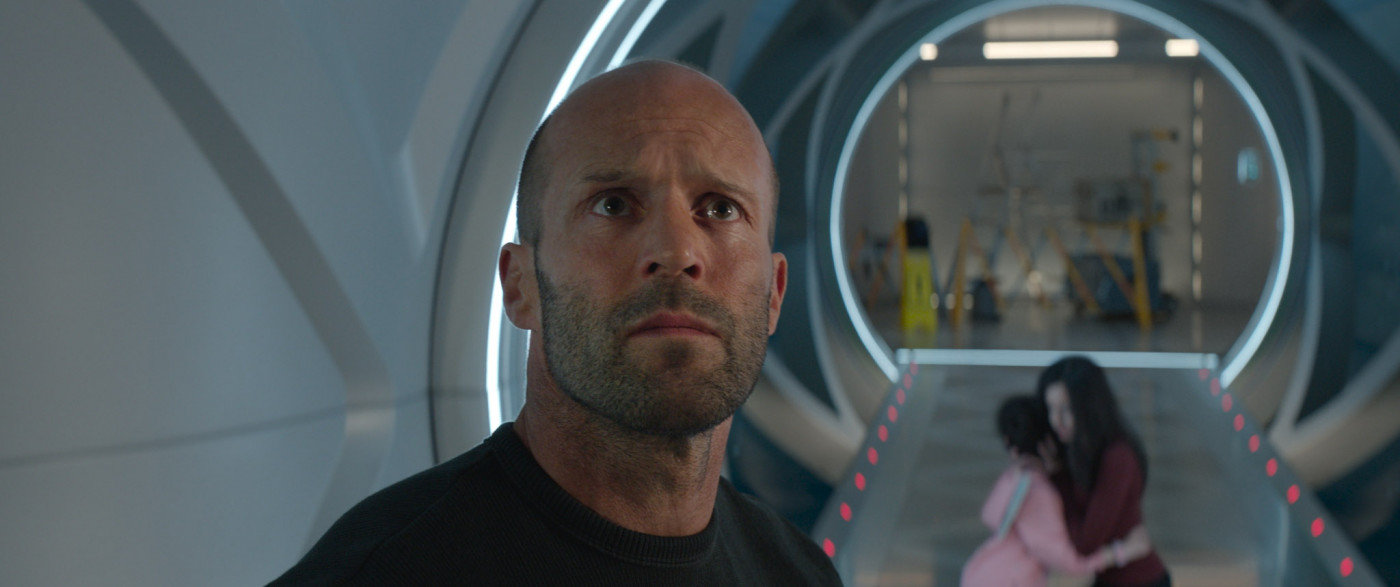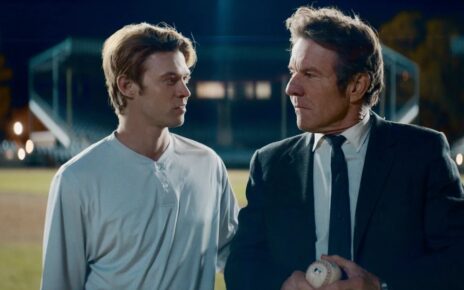I can’t be disappointed when I have no expectations, can I? I mean, this is the fourth entry in a weak franchise, one that has consistently promised more than it delivered. And yet, this film was to be The First Purge, the origin story – and delivered at a time when there’s an authoritarian in power and a disgustingly blasé attitude towards the violence running rampant in this country. Now is the time to make a statement about where our nation is going and why it’s going there. I’m not sure what’s more disappointing – the fact that these jokers botched the message so badly or the fact that I should have abandoned all my expectations as soon as I saw the preview.
This is a long review – I’m going to skim the actual movie part, because I rewrote the plot, and, believe me, my writing works much better than what actually got put on screen.
The First Purge began as an experiment in Staten Island. The borough is closed off for the hours of The Purge -a government-sponsored period in which all crime is legal– lest purging goes awry. An emerging political group, the New Founding Fathers of America (NFFA), holds the presidency and enough influence to make this happen. The how? is ignored. The why? is presented in the form of Chief of Staff and head psychologist (?) Marisa Tomei. It is unclear as to whether her POV that citizens need a legal, violent release is believed. What is clear is that the NFFA is encouraging participation (giving monetary incentives, no less) and issuing all the would-be purgers spooky glow-in-the-dark video-camera contact lenses.
At first, not much happens, but then NFFA mercenaries are brought in to start killing people. Almost all the Staten Island citizens in the film are persons of color – I was annoyed for a while that the movie seemed to be stating that minorities were easier to manipulate. However, it turned out many, many citizens didn’t want to purge at all, so the NFFA stepped up its game. The mercenaries are white and foreign and eventually the citizens fight back. A hero is made of drug dealing kingpin Dmitiri (Y’lan Noel). But in a film attempting a political angle, this one resolves as a horror would. By the end of the film, no effective political message has been made.
The whole premise of the political commentary in The First Purge has a worrisome hiccup. Not only is there little more than half-assed hinting at the white supremacy that has taken hold of our current government, The Purge IS legal. When you comment on current American politics right now, it’s “Legal? Sméagol!” The President is profiting from the office; so are many of his cabinet. Russia hijacked our election and got away with it. Immigrant children have been torn from their parents. Citizens from certain Muslim countries have been banned entry … NONE of that is legal, and that’s only the tip of the iceberg. The hallmark of the current administration is doing or allowing something both shady and “unpresidented” [sic] and then waiting to see if anyone is going to complain … and when somebody does, Fox News and the Republican horde rail against people they would rabidly defend if a Democrat were crossing the exact same line. The premise of The Purge describes a society riddled with failed politics; that’s the sales pitch of the entire franchise – enter a land where the country is so broken, we’ve allowed “Crime Free Thursdays” or whatever. Is it your land? It sure looks like it, doesn’t it? The inability to comment effectively on the system of government that led to said Purge is, in a word, criminal.
Frustrated with this film, I wrote my own. Let me illustrate in detail how this movie should have played:
ACT I
A drug-addicted cop commits suicide. In an effort to save embarrassment from the department, the police issue a statement saying the cop was shot dead in a gangland drive by. Conservative pundits and news shows swarm. Behind in the polls, the Republican presidential candidate, John Thomas – our protagonist—uses the event as rally point. Thomas goes on tour, citing fabricated statistics and dropping many phrases of dog-whistle conservative politics: inner-city, gangs, “Blue Lives Matter,” and the like. His opponent, a former D.A. with a history of big case convictions, is suddenly called “soft on crime” and it sticks. Conservative news shows eat it up, stoking the hate with veiled racism, xenophobia, and urban panic; they decry the violence within cities on a daily basis. A new and secretive political force, the NFFA, comes into view, throwing their considerable funds behind a campaign of panic. The masses respond and rally to elect Thomas.
Within months of election, the hateful rhetoric leads from fictitious crime to actual crime. A police officer is shot in the line of duty. With the NFFA’s backing, President Thomas unveils a new stunt, “The Purge,” a one-night only, all-crimes-legal, violent free-for-all confined entirely within red-lined districts of thirty (30) selected cities throughout the country. The President cites a specific hand-selected panel of psychologists who claim this night of violence will act as a self-relieving catharsis for all the rage and frustration pent up among urban dwellers. Inspired by the correct use of the word “catharsis,” Americans by-and-large ignore the fact that not a single person on the panel holds an advanced degree of any kind. The ACLU and several other groups protest, but are largely ignored; legal or not, The Purge is going to happen.
ACT II
The night of The Purge: Many hide, many flee, but many more stand in solidarity within the red-lined districts, choosing to protest with quiet march by candlelight. Hate-groups and militias get weaponized and travel hundreds of miles from small-towns and backwater communities to be within the crime-free zone on Purge night. Police set-up check points outside the zones and vow not to enter during The Purge itself. In many cities, the conflicting groups reenact the events in Charlottesville. The hate-groups march with tiki torches, flags both American and Confederate, and the occasional swastika; they confront their “enemy” and exchange heated words, but violence is not forthcoming immediately. Noticing a lack of police presence, opportunists among the candlelight protesters take to looting. Seeing moral justification, militia men open fire on looters and, before long, Purge night begins in earnest.
In the ensuing bloodbath, many thousands of people across the nation are mudered, hundreds and hundreds of businesses are trashed, and at least twenty of the cities are set on fire. In one key moment, Citizen Y, a white rifle-toting sniper, sets up outside a Purge zone and picks targets within it, murdering three from a distant vantage point. Citizen Z, a black man and sibling to a murdered woman, picks up a rifle and shoots Citizen Y in the shoulder, not killing him, but effectively forcing Citizen Y’s permanent retreat for the evening. The camera picks this up. Conservative news is shocked that a white man outside the Purge zone is a victim.
ACT III
In the aftermath of The Purge, Americans are horrified by the body count and damage done. It seems clear to every resident of the thirty cities and their outlying metro regions that most of the following year will be devoted to funerals and cleaning up the damage done in The First Purge. The President’s own men cite the fact that unemployment has risen 5% overnight and the GNP will be at least 15% lower thanks to the destruction … and yet, President Thomas immediately goes on television citing The Purge as a “tremendous success” and cites “fine people on both sides” of The Purge conflict. Conservative talk shows echo the sentiments. The exact same people who denounced inner-city violence as a plague in Act I find it a glorious rebirth of a nation by Act III. Meanwhile, Citizen Y and Citizen Z are both arrested. Citizen Y is charged and convicted of murder, which is appealed. Citizen Z is charged and convicted of attempted murder, which is upheld on appeal. The case of Citizen Y goes all the way to the Supreme Court, which acquits on the basis of The Purge being legal and unconstrained regardless of temporary boundaries. Citizen Y walks. The Purge becomes a thing. Thousands of pacifists in purple states flee to Canada in the aftermath, paving the way for President Thomas’ reelection.
In the final scene, we at long last get a look at the inner workings of the NFFA – white men all, certainly uber-wealthy, laughing, drinking, toasting. The camera pans to find President Thomas is a secret member of the group — to no one’s surprise. Then the camera looks a little further and finds three separate members of the Supreme Court including both the Chief Justice and the man who wrote the majority opinion acquitting Citizen Y and allowing The Purge to exist forever.
And that is how you freaking write a political hit piece, jerks. Don’t make me explain this again.
What do I guess happened? I would bet anything that many of the ideas I just set down were thrown around by  screenwriter James DeMonaco, director Gerard McMurray, and a number of the film’s producers and all of the ideas were softened or dismissed for fear of pissing off the wrong hate-group, be they neo-Nazis, the NRA, or Trump voters (which include many, if not all, of the former two groups). These guys didn’t have the balls to tell the story right, so instead they made the same crappy horror story with some political twinges, but not enough to make a coherent statement about anything. The movie became one of survival of body instead of survival of morality, and thus relegated it, like so many other films, to the trash heap of movie history. Hence, I do hope we are all purged out by now.
screenwriter James DeMonaco, director Gerard McMurray, and a number of the film’s producers and all of the ideas were softened or dismissed for fear of pissing off the wrong hate-group, be they neo-Nazis, the NRA, or Trump voters (which include many, if not all, of the former two groups). These guys didn’t have the balls to tell the story right, so instead they made the same crappy horror story with some political twinges, but not enough to make a coherent statement about anything. The movie became one of survival of body instead of survival of morality, and thus relegated it, like so many other films, to the trash heap of movie history. Hence, I do hope we are all purged out by now.
There’s a political typhoon ahead
Time to describe dystopia widespread
The importance, one reflects
When attempting History X
Is try to avoid another copy of Dredd
Rated R, 98 Minutes
Director: Gerard McMurray
Writer: James DeMonaco
Genre: Our screwed future (or is it our screwed present?)
Type of being most likely to enjoy this film: Right Wing thugs, breathing a sigh of relief that a boat was missed, badly
Type of being least likely to enjoy this film: Anyone hoping for a coherent message



